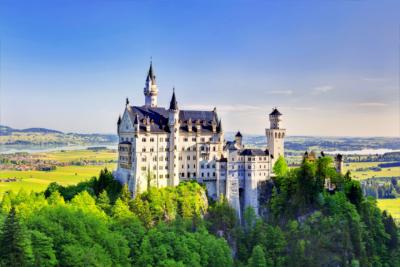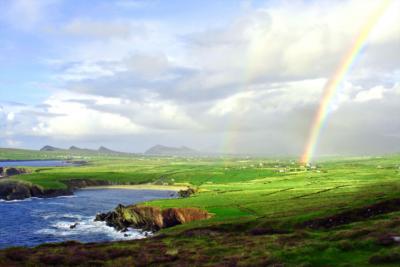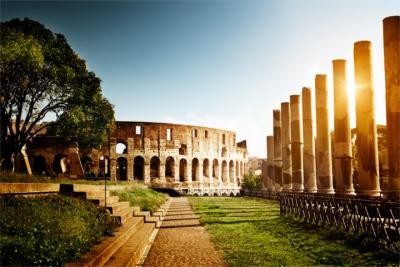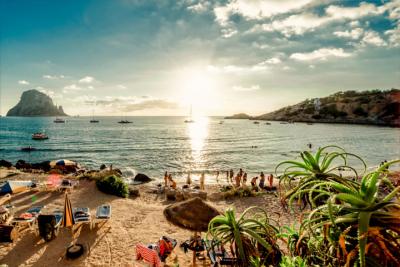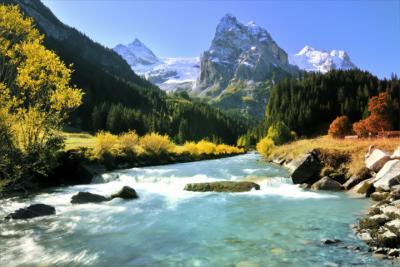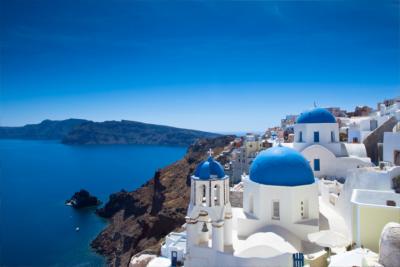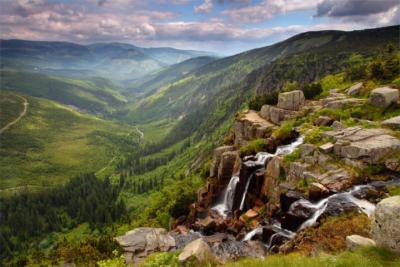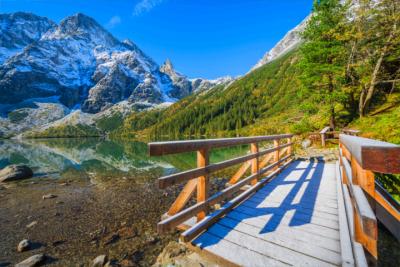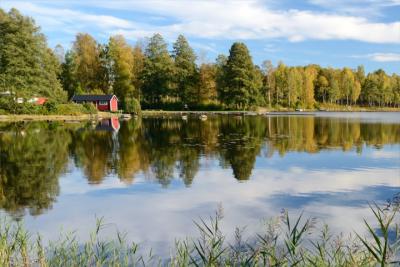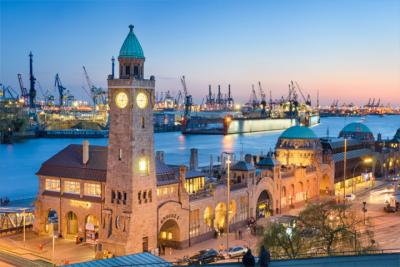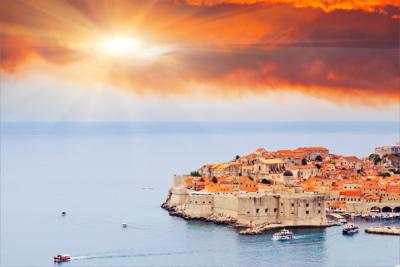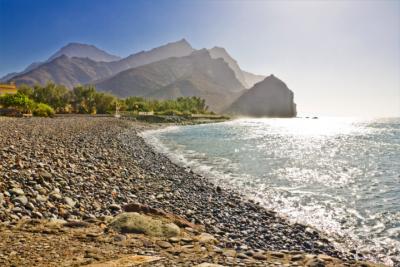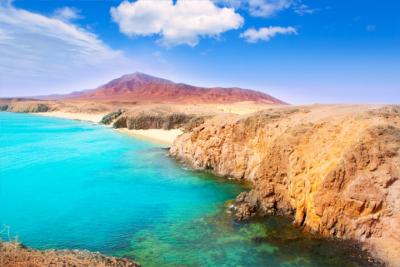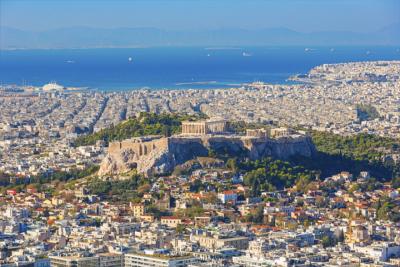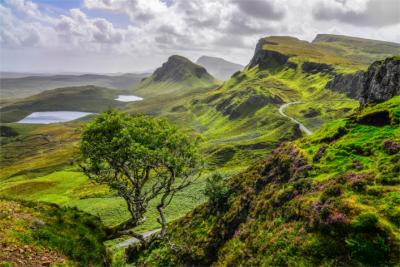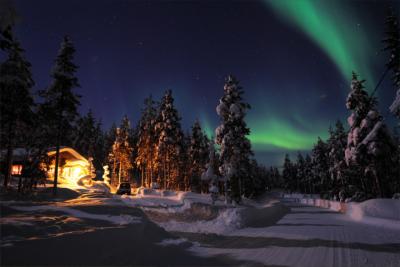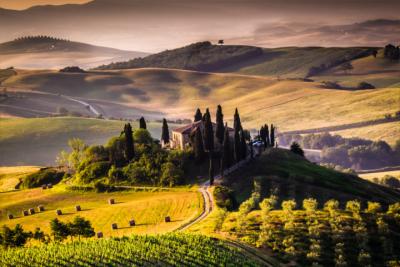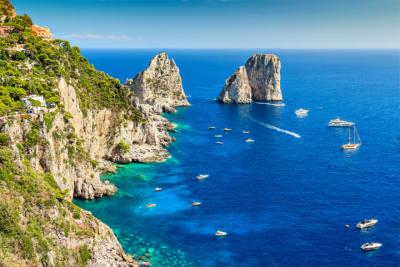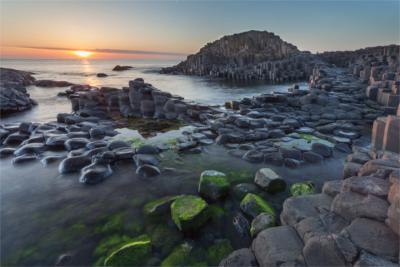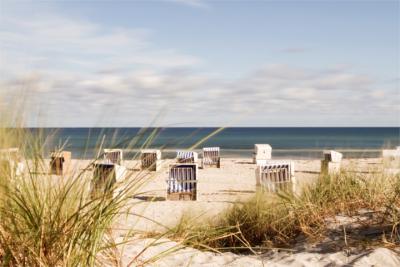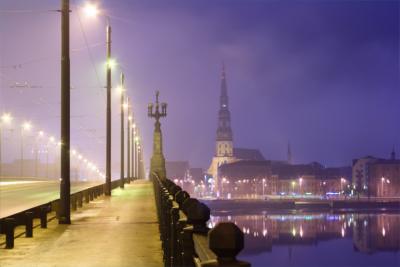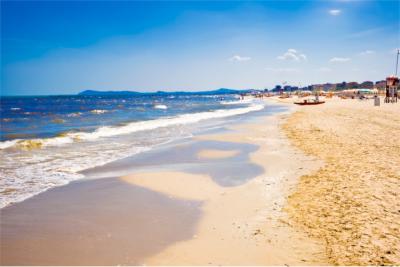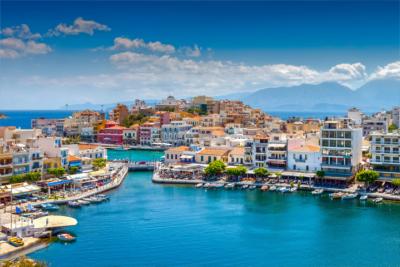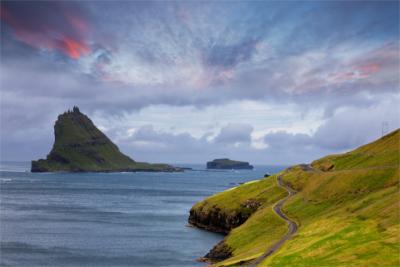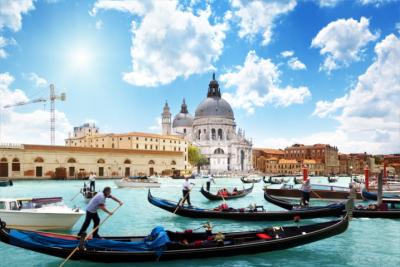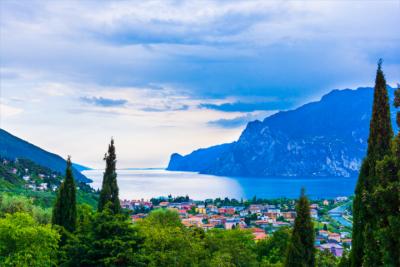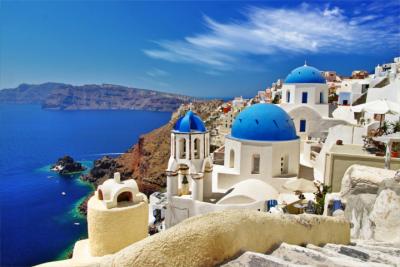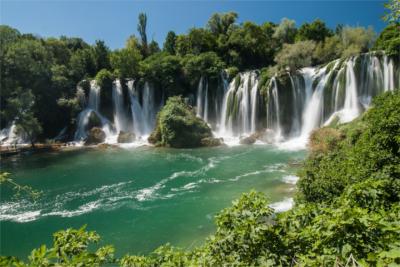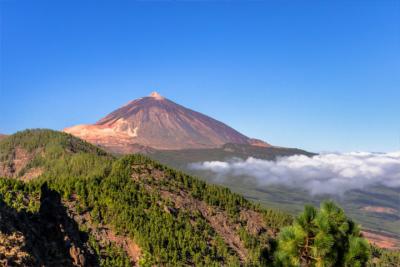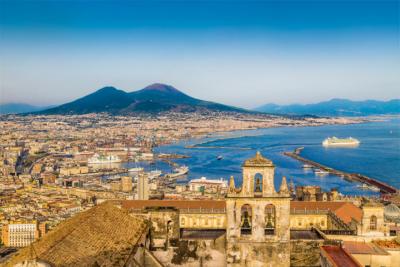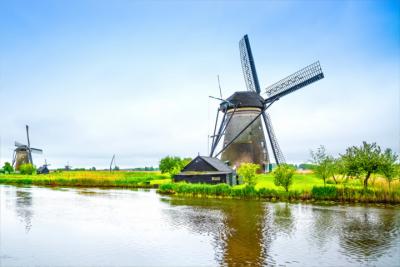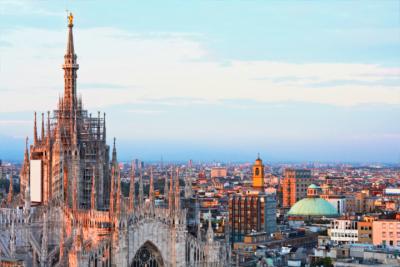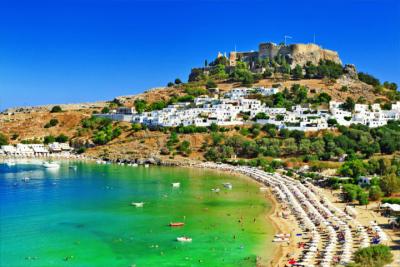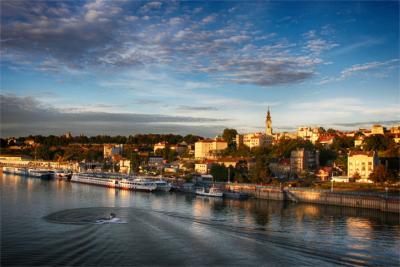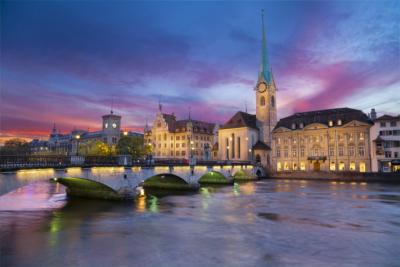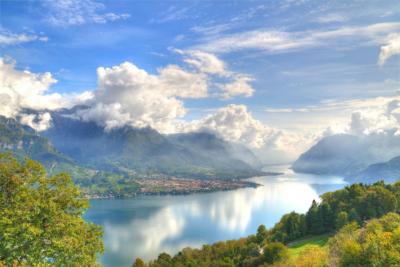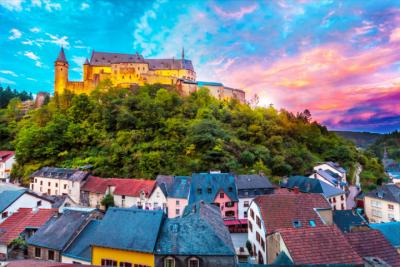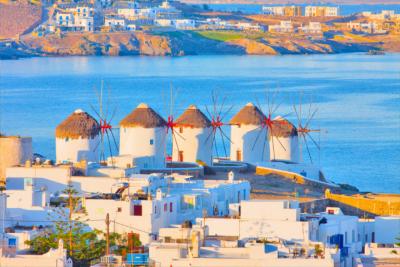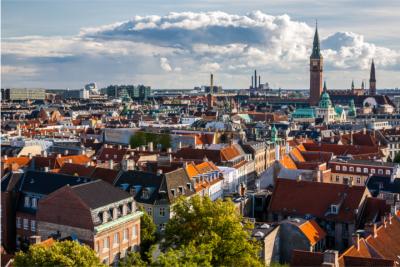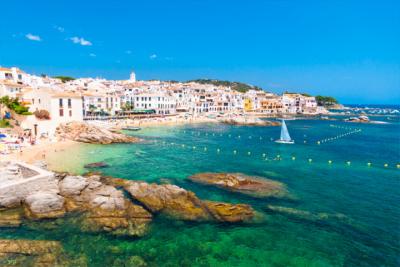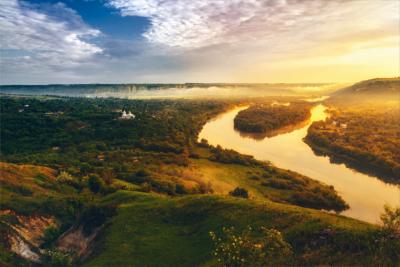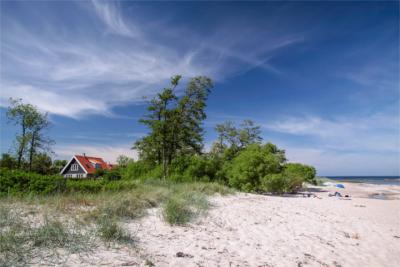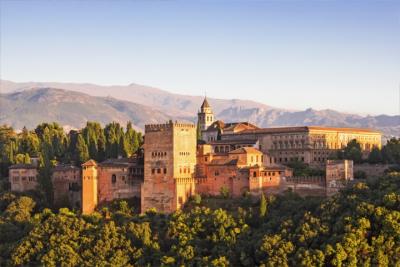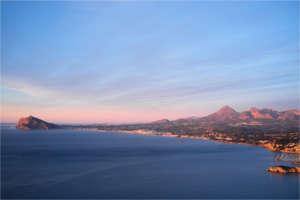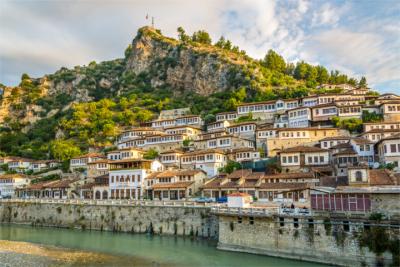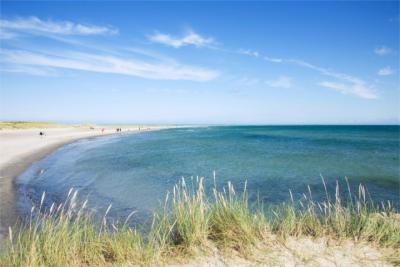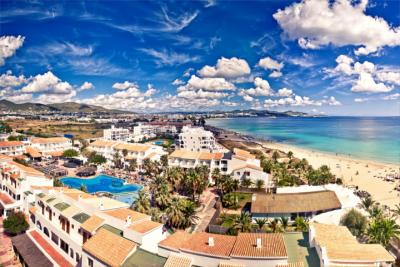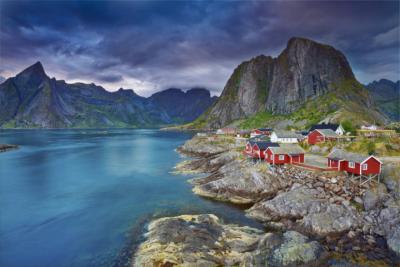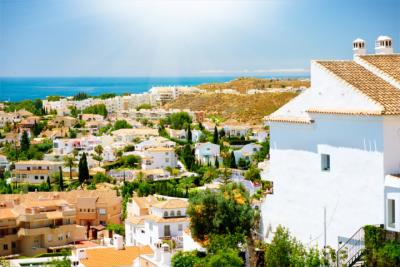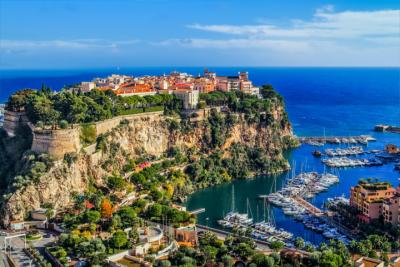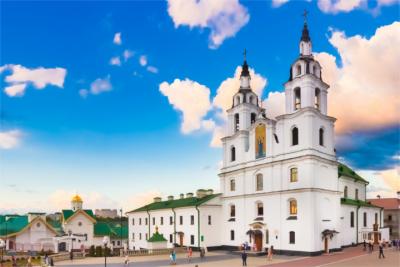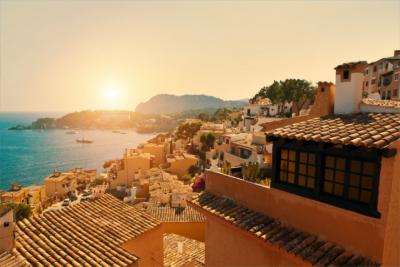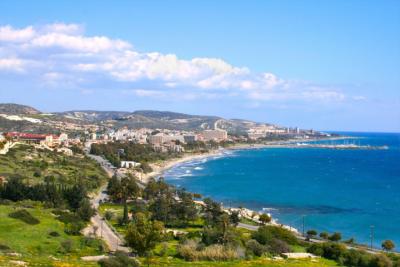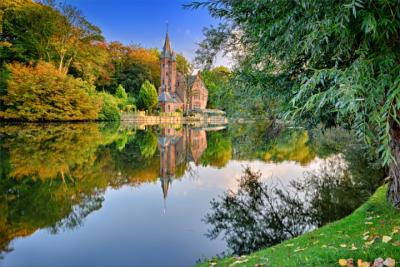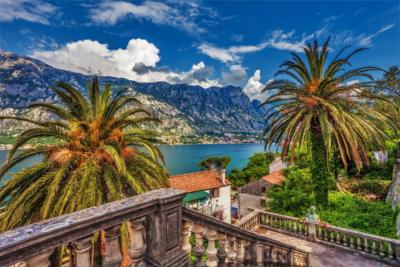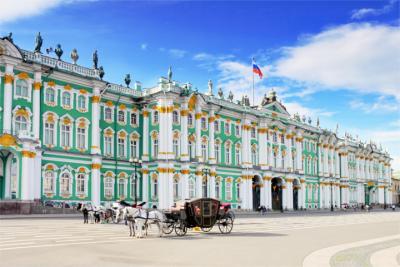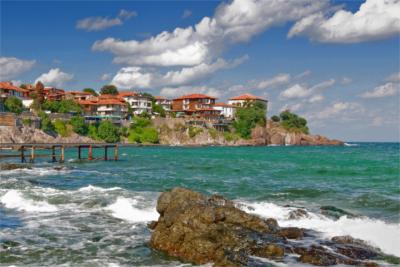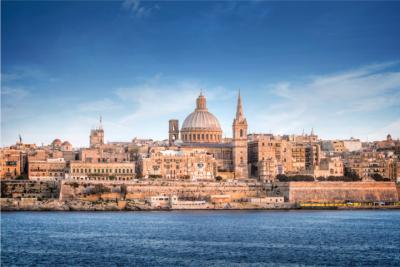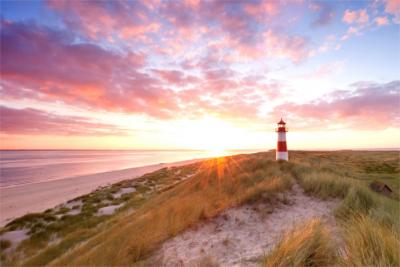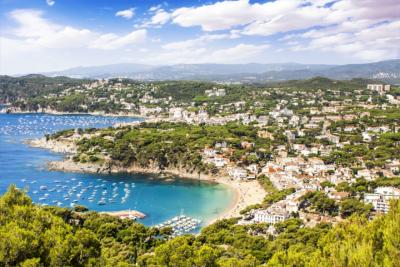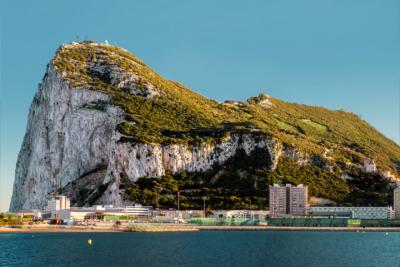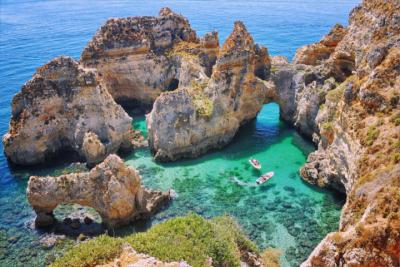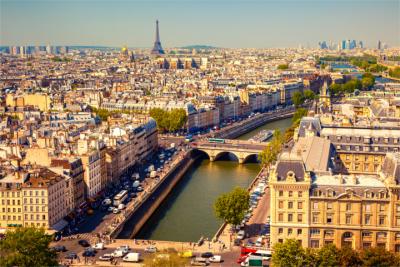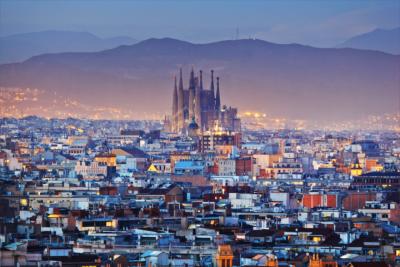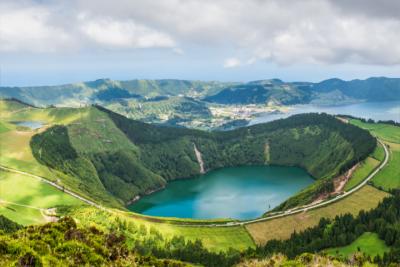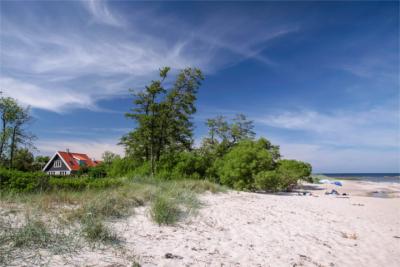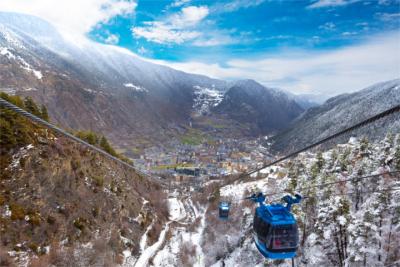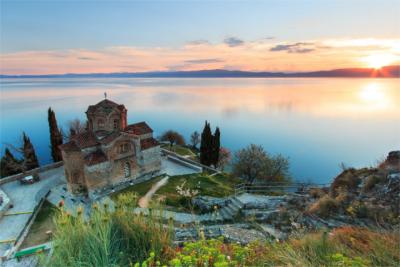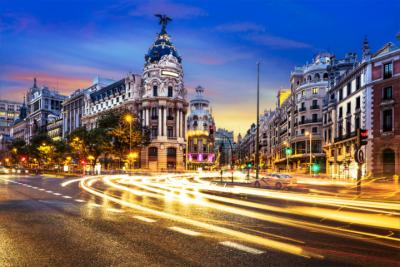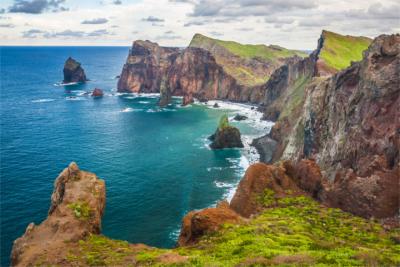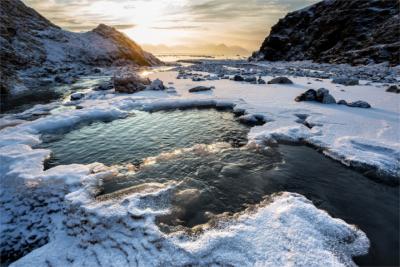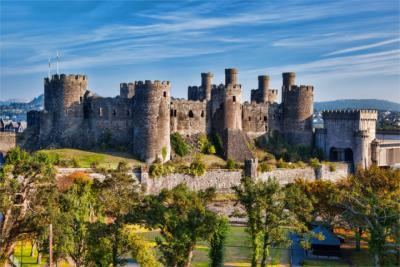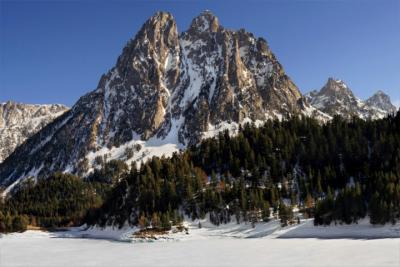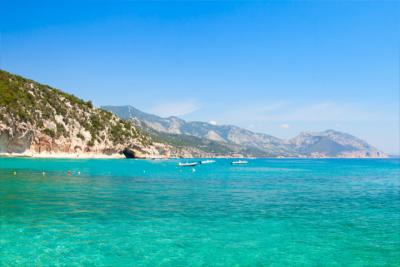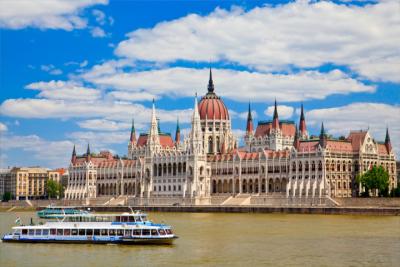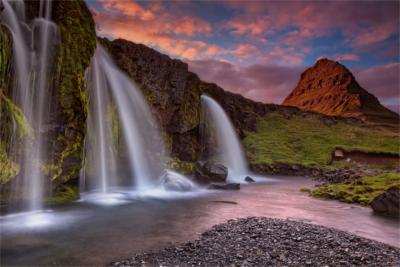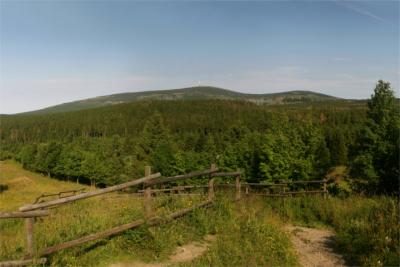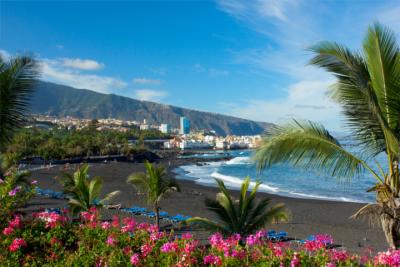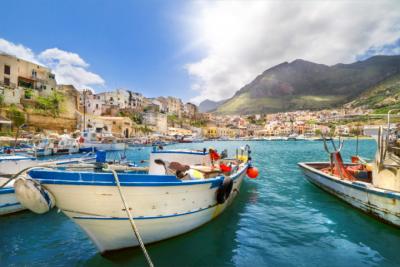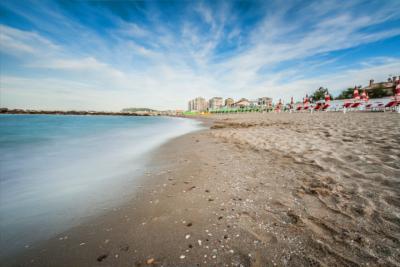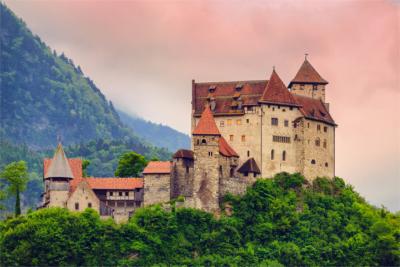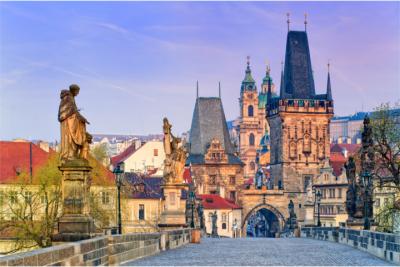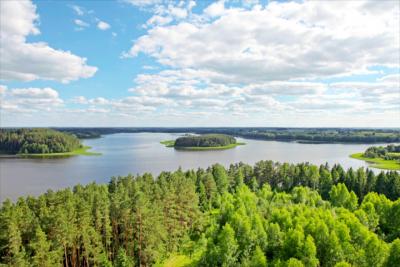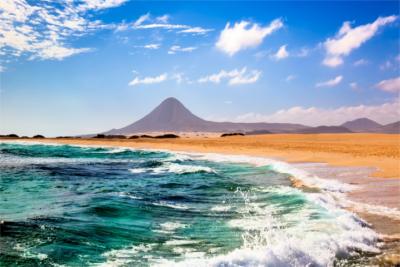Travel Offers
Travelmyne Featureprint
Distance
Azores - Green Volcanic Islands in the Atlantic Ocean
Hidden in the Atlantic Ocean you find the juicy green Azores, the westernmost island paradise in Europe. Magical turquoise crater lakes bear witness to the volcanic past of the nine islands.
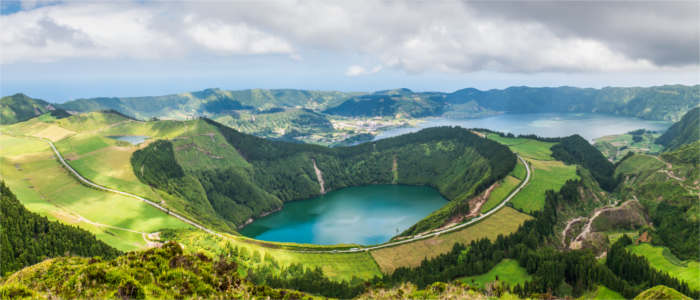
Geography - The wonderful climate of the Atlantic Ocean
The Azores are part of the Mid-Atlantic Ridge and consists of nine greater islands as well as numerous small rocky islands. The island group is about 1,369 kilometres away from the European mainland and an autonomous region of Portugal. It can be divided into three main groups: the north-western group (Grupo Ocidental), the central group (Grupo Central) and the south-eastern group (Grupo Oriental). The climate on the islands is oceanic to subtropical and pleasant throughout the year. The Atlantic Ocean causes warm summers and mild winters. Due to the masses of humid air, the islands are surrounded by a loose cloud layer most of the time, which causes solar radiation to be less intense.
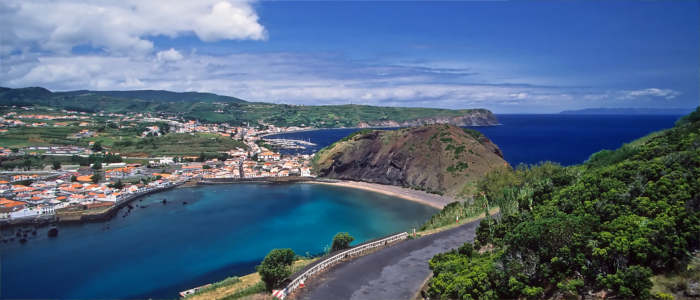
Nature - The magic of the volcanic islands
Eight of the nine island are of volcanic origin, which is clearly shown in their landscape. The Azores are Europe's most western natural beauty and display a lush green with numerous types of plants and colourful flowers all year. The islands have been declared a biodiversity hotspot. Over 70 species of plants are endemic, for example the rare azorina. The hortensias, which blossom in blue, purple and white from June to August, are originally from Asia but they dominate the typical picture of the Azores now. Shining green mountain ranges, bizarre granite rocks, harsh rocky coasts and untouched natural landscapes make the islands a paradise for hikers and lovers of nature. A special highlight is the twin-lake Lagoa das Sete Cidades, which consists of Lagoa Azul and Lagoa Verde. In addition, there are numerous rivers and several exciting waterfalls. Many of the volcanoes have filled with water and constitute beautiful crater lakes. The waters around the Azores are extraordinarily rich in fish. 38 different types of whales and dolphins alone can be watched here.
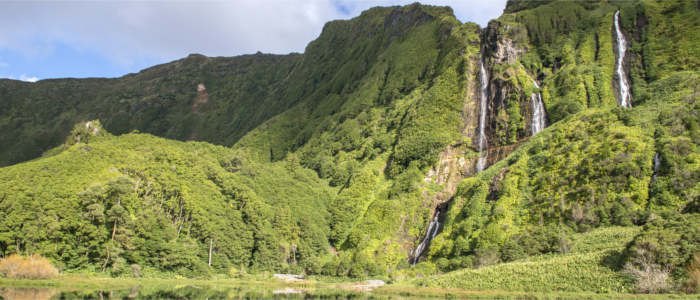
Natural sights - A paradise for hikers
The highest point on the Azores is the volcano Mount Pico (2,351 m) on the island of the same name. Travellers can climb it all year and day trips to its peak are offered by many hotels. The islands generally have very exciting geothermal features. The lava tunnel of São Roque, the volcanic cave Algar do Carvão or the thermal springs in the village of Caldeiras Velha are excellently suited for medical and spa holidays. This is also true of the hot sulphur springs, which have a water temperature of 38 °C and invite visitors to have a relaxing bath. Most plants grow on Flores Island, as its name suggests. You find seven lakes here with the Funda Lake as the greatest example. One of the most beautiful hiking routes starts in the scenic village of Ponta Delgada and leads to the river delta Ribeira do Moinho to the municipality Fajã Grande.
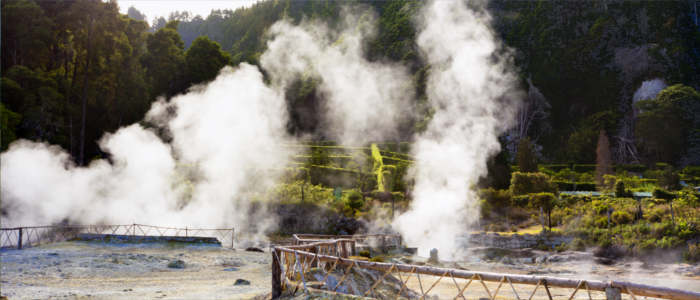
Culture - The Portuguese Atlantis
Are the Azores the legendary and mysterious Atlantis after all? Several nations claim the sunken island as their own. According to ancient legends, the islands is said to have been located on the territory of the present-day Azores. The islands were first charted in the 14th century. The Portuguese Diogo de Silves is known as the official discoverer of the Azores but the islands were populated and farmed even before the discovery. Pineapples, tea and tobacco were grown on the Azores in the 19th century. In additon, whaling was important for the islands' inhabitants for a long time. The Azores regularly suffer volcanic eruptions. The last one occurred in 1998 and caused the death of ten people on Faial Island. Great hospitality is a characteristic trait of the islands' population. Most inhabitants live on tourism. They are very open towards visitors and always have an exciting island story to tell.
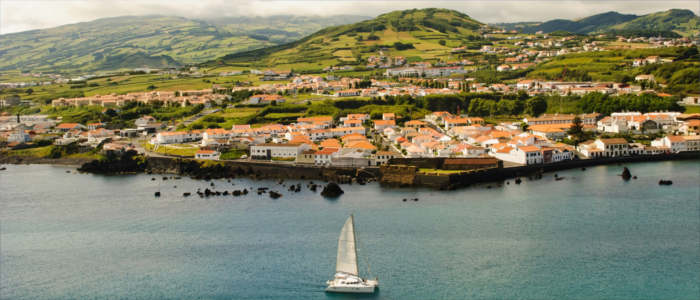
Cultural sights - The City of Heroes and the pub in the Atlantic Ocean
Most visitors of the Azores first get to know São Miguel Island. Especially the old town of the Azorean capital Ponta Delgada is worth seeing. The lively activity on the market square and the architecture of the many churches complement the island's charm. However, the UNESCO declared a different Azorean town a Cultural Heritage site. Angra do Heroísmo - the "City of Heroes" - is the capital of Terceira Island and fascinates with magnificently arranged parks, palaces and the Renaissance cathedral. The best-known bar in the Atlantic Ocean is probably the legendary Peter's Cafe Sport in the harbour of Faial Island. Sailors, fishers and everyone who is up for real sailor's yarn and a proper drink is a welcome guest here. Travellers can also enjoy a good wine and learn about wine-growing on the Azores in the Wine Museum (Museo do Vinho) in Madalena.
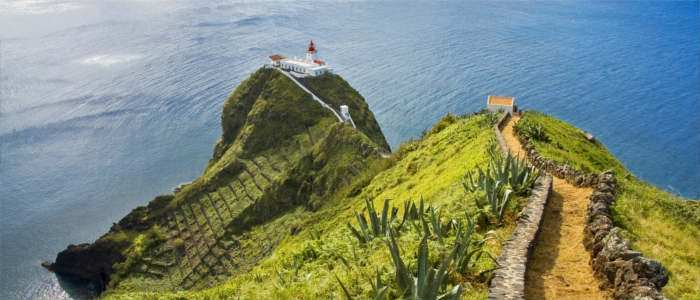
Experience - Volcanic wine and Azorean tea
The Azorean wine is a speciality but a truly unique delicacy is the "volcanic wine" from Pico Island. The way of cooking is strongly linked to the islands' nature. A special dish is the cozido (a stew), for example the cozido das furnas (meat stew). Meat and vegetables are piled up in pots. These pots are closed, put in hot holes in the ground and covered with volcanic ash. Geothermal energy warms up the food gently. Another speciality is the cheese from the Azores. It is a popular souvenir just like the sweet pineapple liqueur, pottery and Azorean tea. The Azores accommodate Europe's only tea plantation as they are the only place which has the appropriate climate for growing the delicate tea plants. Travellers can also experience the islands in a tent in many places. Whether you are at the beach or in the heartland, camping is generally permitted. Several camping grounds can even be used free of charge. The nightlife on the island takes place in the bars and pubs or right at the beach under the starlit sky.
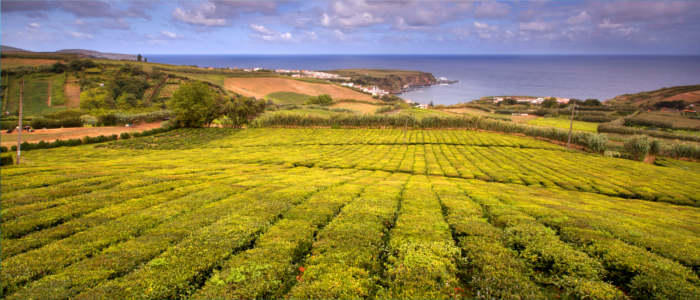
Activities - Diving, sailing and hiking
The wonderful nature of the islands offers excellent conditions for a number of exciting activities. Pico Island is one of the most beautiful diving areas on earth. Every island holds several diving centres. In addition, you can go kayaking, rafting or go on a tour in a canoe on most islands. Different kinds of water sports offer adventures at São Miguel's beaches. Sailing and fishing in the sea as well as on the lakes and rivers is very popular here. Travellers who climb Mount Pico are rewarded with a fantastic view. Of course, the islands' heartland also has its appeal. The volcanic landscape, the small desert zones and the laurel forests can be explored by Jeep and off-road vehicle but also on foot. There are several well-developed hiking trails on the islands.
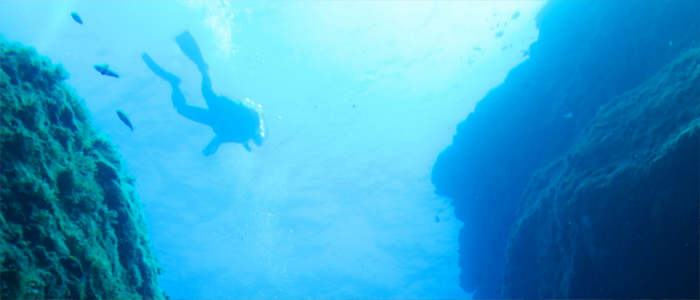
Information
The best time for travelling the Azores are the summer and autumn months. At that time, the average daily temperature are pleasant 25 °C. The month with the most hours of sunshine is August. If you visit the islands in summer, you should prepare yourself for a lot of rain. The international airport is located on São Miguel. You can reach the other islands by ferry or ship.
The Azores are a natural paradise in the Atlantic Ocean and have been spared from mass tourism. Lovers of nature will be delighted by their extraordinary landscape. The islands are a wonderful retreat in the middle of the ocean for travellers who want to leave everyday life behind and relax.

